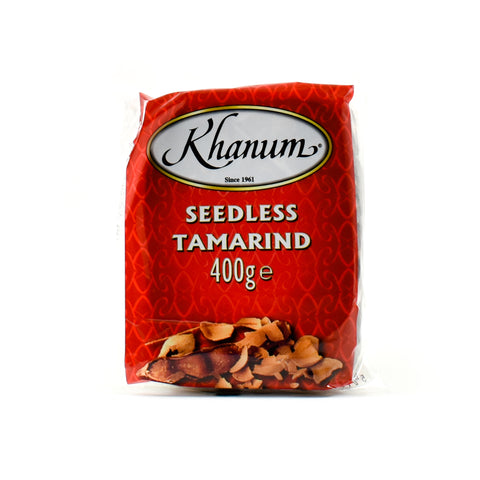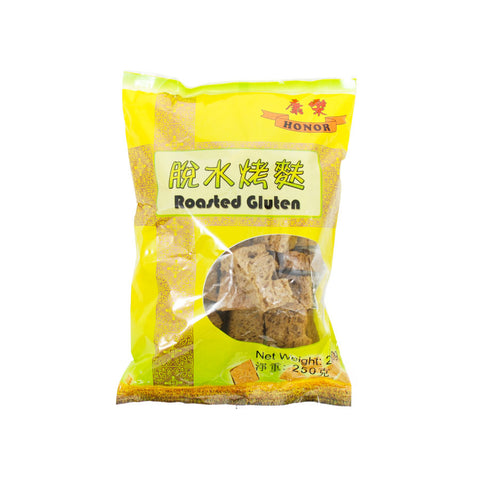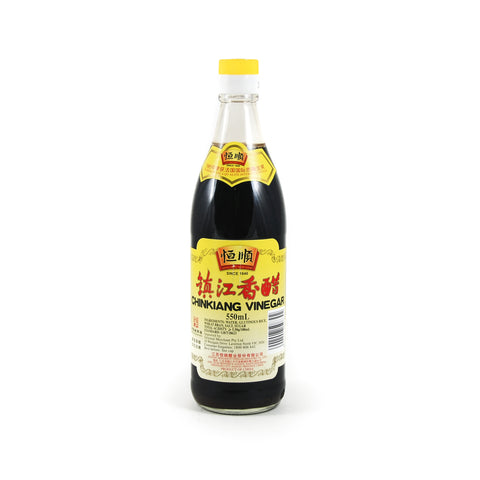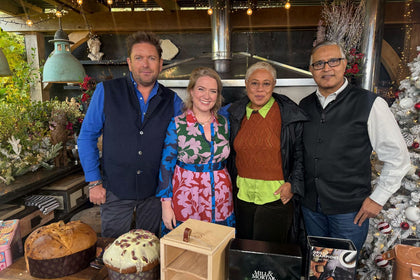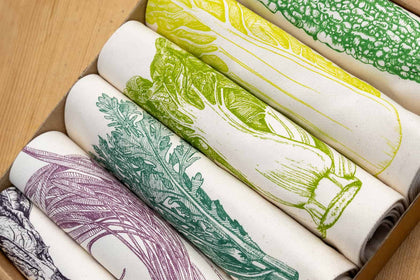Julius Fiedler On Why Food (That Happens To Be Vegan) Inspires Him
by Julius Fiedler

Chef Julius Fielder shares the inspiration behind his first cookbook, Naturally Vegan. As the name suggests, these are dishes without meat or dairy. But what they do have is meticulously documented traditions and recipes from around the world... that just happen to be vegan.
Julius's passion for telling the stories of different cultures and cuisines is extraordinary. As he says himself, "this is not just phase - this is a mission". Read on, for a taste of his inspiration, and an insight into his thorough research and exploration.
Start cooking straight away, with Julius's trio of vegan recipes exclusively for Sous Chef customers.
Naturally Vegan: Delicious Recipes From Around The World That Just Happen To Be Plant-Based by Julius Fiedler is out now, £25. DK RED
What’s the best thing you’ve eaten recently?
When I travelled to Bengaluru in the south of India, I visited a local chef to learn how he and his mother make Idli - a common breakfast staple. It’s made by fermenting a paste of ground rice and lentils, then steaming it until it becomes as light and fluffy as a cloud.
Sometimes the most humble foods are also the most complex
The idli are served with a cooling coconut chutney and a wholesome vegetable and lentil curry called sambar. At Iyer Idly, where I filmed the process, locals start lining the streets as early as 6:30 am to get their breakfast for just 10 rupees - the equivalent of 10 cents - before heading to work.
It was an incredible reminder that sometimes the most humble foods are also the most complex - and the most delicious.
What’s the one dish to make anyone fall in love with your new book?
It has to be Fakes, a Greek lentil soup. As I was writing the recipes for the book, I realised that many of them really are about the art of mastering basics — and Fakes is essentially a masterclass of cooking lentils to perfection.
The secret lies in its simplicity
At first sight, it’s not much else than water, lentils and vegetables. But taste it and you’d suspect it had been cooked for hours in a giant cast-iron cauldron hung over stacks of burning logs. The secret lies in its simplicity.
The addition of tomato purée means the dish requires longer cooking, which allows plenty of time to coax out flavours that would otherwise be unattainable. It’s a culinary ace up your sleeve – the foundation to transforming lentils into a bowl of comfort.
TRY: Jian Dui - Stuffed Sesame Balls recipe
Which 3 Sous Chef ingredients are always in your pantry?
- Seedless tamarind
- Roasted wheat gluten
- Black vinegar
There are many ingredients that cultures around the world consider everyday staples — and that are keys to delicious flavours.
Sous Chef has helped me tremendously by making these authentic ingredients accessible.
A good example is seedless tamarind. We all know ready-made tamarind paste, which is essentially a diluted version. Seedless tamarind is much more concentrated in flavour, even once it’s mixed with water. It has the same transformative powers that lemon juice has and can make or break an entire dish.
Another favourite is roasted wheat gluten. It’s one of the oldest foods in the world, dating back as far as the sixth century, when it was most likely invented by Chinese Buddhist monks. Following a vegetarian diet, they explored ways to offer meat-like textures to visitors who ate at the monastery.
One of those ways was by rinsing wheat dough in water, which removed the starches and left behind the spongy gluten structure that, once simmered, had a pleasant chewiness. Today, wheat gluten is most often known by its Japanese name “seitan”. It’s high in protein, but the culinary bonus is its ability to beautifully absorb the flavours of whatever it is cooked with.
Then there’s black vinegar, a common ingredient in many flavoursome Chinese dishes. It adds a lip-smacking deliciousness to salad dressings and sauces — and is difficult to substitute with other vinegars.
These ingredients are difficult to find in most supermarkets, and whilst I offer substitutes in the book alongside the traditional recipes, Sous Chef has helped me tremendously by making these authentic ingredients accessible.
Were you always destined to cook?
I actually studied film. I always wanted to tell stories, but thought of storytelling as something reserved for fiction. During uni, I found myself studying dramas by day, but come night, I’d be watching Gennaro Contaldo and Antonio Carluccio driving through Italy to rediscover the food of their home. Or Anthony Bourdain immersing himself in cultures all around the world.
Food is one of the richest, most beautiful ways to tell a story
Around the time of my graduation, the realisation hit me: food is one of the richest, most beautiful ways to tell a story. Eventually, I took my graduation project as an opportunity to combine the two, film and food, and, somewhat ironically now that I am vegan, I made a documentary about British farmhouse cheddar cheese.
But it showed me how complex a subject food could be - and how much there was to tell. Now every recipe becomes an opportunity to share a story - be it about history, culture or nostalgia - all wrapped up in something you can actually savour. The experiences around food, from cooking to eating, become much richer when we understand what’s attached.

What new tips, tricks or ideas have you learned while writing the book?
Whilst stepping into kitchens around the world, one gadget made an appearance time and again. The pressure cooker.
To me, it always had the reputation of a dusty, old artefact of a few generations past.
But rather than the pressure cooker being forgotten about entirely, the culture I grew up in had shifted culinary priorities and no longer cooked legumes and many other foods from scratch in the way previous generations had.
It’s silly, because time and money are the two resources people often lack — and the pressure cooker can save both. With a little trick, which I explain in the book, it takes 7 minutes to cook chickpeas from scratch — that’s compared to 90 minutes in a normal pan. Dried legumes are also much cheaper compared to jarred or canned, and they involve fewer processing steps, meaning they have an even smaller environmental footprint.
What are the components of a fantastic meal for you?
It’s all about layers — of flavour and texture. India’s Vada Pav is the perfect example. It’s a spiced potato fritter, topped with crispy bits of fried chickpea batter and served in a soft bread bun.
There are three chutneys involved — a fiery garlic chutney, a tangy and sweet tamarind chutney and a refreshing coriander chutney, each of them adding its own complementing character to the potato fritter and thereby turning every single bite into an explosion of flavours.
What is your favourite ingredient to work with and why?
Legumes. They’re little powerhouses — they nourish the soil they grow in by storing nitrogen, they’re packed with protein and fibre and they’re unbelievably versatile. You can cook them from scratch and use them in fiery stews like Türkiye’s national dish Kuru Fasulye; they can be cooked and blended into a purée to thicken soups and stews like it’s done for an Italian Ribollita; or they can be ground into a flour, then mixed into a batter and coagulated into a tofu, as it is common in Burmese food culture.
It’s not surprising that they’ve been a cornerstone of cuisines across the world for thousands of years.
ENJOY: Suan Lefen - Hot & Sour Noodle Soup recipe.
How do you stay current with food trends and incorporate them into your food?
Trends are temporary. But many of the dishes in the book have stood the test of time for centuries, if not millennia. They did so because they’re delicious, resourceful and deeply connected to nature. I think that’s the kind of food we need more of today.
Trends oftentimes tap into these pre-existing culinary traditions, like making tofu from different legumes. Rather than following a trend, I try understand what traditions we may have lost and whether we might benefit from bringing them back.
This is not just a phase, but a mission
Can you tell me about a particularly memorable meal you have had and what made it so special?
One of my most unforgettable experiences was filming with chefs at an Indian wedding in Kerala. When I arrived, there wasn’t a kitchen, but a massive barn with fresh produce covering the area of a small farmer’s market and fire pits dug into the ground.
The chefs cooked all night — stirring giant pots with wooden paddles rather than spoons, preparing over 30 dishes and 10 desserts for 1,500 guests.
It was a Hindu wedding, which means that all of these dishes were traditionally vegetarian with about half of them being naturally vegan. It made me realise that plant-based food, too, can take centre-stage in celebrations. It’s not just an afterthought.
What will you be cooking next?
The idea for Naturally Vegan — to find and cook traditional dishes from around the world that just happen to be plant-based — is not just a phase, but a mission.
I have recently visited Mexico, which transformed my understanding of corn from something I grew up eating half-heartedly at BBQs to appreciating it as a staple that has shaped entire civilisations.
The recipes I discovered there are not in this book, but I am documenting these travels in detail on my social channels. And who knows, maybe there will be a second volume of Naturally Vegan. I feel like I’ve only just scratched the surface. These kinds of dishes are not just the result of culinary curiosity.
They emerged out of a functioning symbiosis between nature and human — both supporting each other. The rapid biodiversity loss we’re facing today is one of the many signs that that symbiosis is now broken. Bringing these dishes back into our diet might show us the path to fixing it.
Cook Julius's recipes here, or shop all vegan ingredients at Sous Chef

About the author
Julius Fiedler is a filmmaker-turned-food creator on a clear mission: to promote a natural, unprocessed, diet that supports the health of both people and the planet. His stunningly executed videos, watched by a combined audience of more than 4 million, are packed with techniques for mastering natural vegan dishes.

